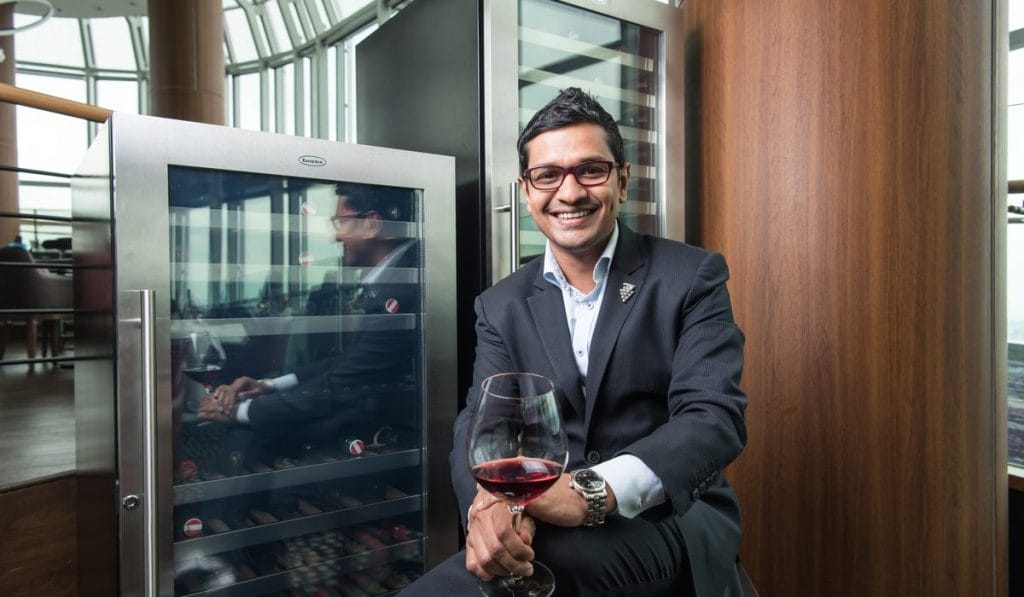Peak: Which varietals/styles tend to perform better while flying, and why?
Fazil: Our sense of taste is affected dramatically at 30,000ft (9,150m) high due to flight conditions such as high altitude, low humidity and dry cabin air. These factors sometimes cause the tannin and astringency of wine to taste more pronounced. Thus, wines fuller in style tend to fare better as compared to lighter wines.
The wine tasting experience in the air can also be impacted by many factors, from the temperature of the wine, the glassware used, to the food pairing. Much care needs to be placed to ensure the best qualities of the wines chosen can still be enjoyed on flight.
An example of a label that performs well is the Neudorf Chardonnay from the Nelson region in New Zealand. It’s heartening to see airlines like Air New Zealand put so much care and attention into tailoring their onboard food and wine menus and in-flight service to altered palates in the air.
P: By that extension, which pairings are affected while in the air?
F: The Air New Zealand and New Zealand Winegrowers Wine Flight had fantastic pairings across all the combinations we tried. We tasted wines from the various regions we travelled across, including Cloudy Bay Te Koko Sauvignon Blanc and Neudorf Moutere Chardonnay and Te Kairanga Chardonnay.
From that experience, I’d have to say the same general rules apply for wine pairings in the air and on the ground. Fresh and light food should be matched to lighter fresh wines while richer and more savoury food should be matched with fuller-bodied wines. However, as alcohol tastes more pronounced in air as compared to on the ground, I would recommend wines with a lighter alcohol content.
P: Do decanting methods change while onboard a flight? Are there any tricks that sommeliers employ?
F: Decanting wines during flight services can be slightly tricker onboard – given the small space, and potential risks of air turbulence – so the usual decanting methods are generally not advisable on a flight.
My tip to still achieve that nice clear wine on flights is for service staff to give the bottle a brisk shake and encourage passengers to swirl the wine glass before drinking to aerate the wine.

P: What strengths do NZ wines have that are underappreciated?
F: Wine growing is a huge part of New Zealand’s tradition and culture, with world-famous vineyard regions in the country such as the Hawke’s Bay and Marlborough. People love New Zealand wines for their quality, sustainability and diversity but they often forget the people behind these amazing wines. New Zealand’s wine scene is made up of genuine, passionate and warm people who take real pride in making sure only the best is showcased across the world. I think that’s one of the key reasons why New Zealand’s success on the world wine stage has been steadily growing.
P: If someone is buying NZ wine, which ones should he / she get?
F: During my third visit to New Zealand, I attended premier wine events such as Pinot Noir New Zealand 2017 and the Sommit 2017. Kiwis are very well known for their quality wines among the New World Producers, especially for wine varieties such as Pinot Noir, Sauvignon Blanc and Chardonnay. I would say that quality wise, wine varieties such as Syrah and Albarino still have much untapped potential.
P: Would you be able to recommend a brief itinerary for winery visits?
F: For a brief itinerary for wineries, I definitely recommend checking out:
MARLBOROUGH New Zealand’s flagship, most well-known wine region known for producing fine Sauvignon Blancs, Rieslings and Pinot Noirs. Marlborough offers increasing depth in both varieties and terroir.
NELSON A small but impressive wine production region that does excellent Pinot Noirs, Chardonnays and Sauvignon Blancs. Nelson has a vibrant artistic and café culture with many wineries offering the benefits of both at their cellar doors. The region’s compact size means visitors can get around most wineries in a day.
HAWKE’S BAY With its rich history and productive landscape, this region is home to an outstanding wine tourism culture and offers a wide variety of cellar door experiences and well as regular food and wine festivals. It is known for its Chardonnays, Cabernet Sauvignons, Syrahs and Merlots.
AUCKLAND A large and very diverse region, known for rich, Bordeaux style reds, as well as the boutique vineyards on Waiheke Island.



